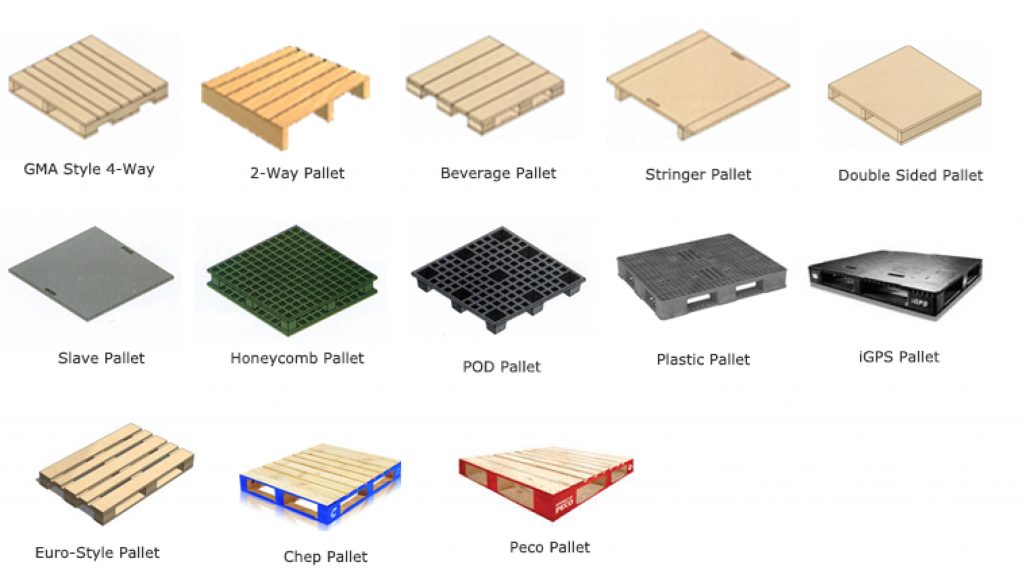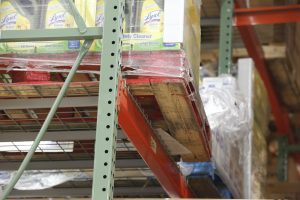 What are the major components of your warehousing operation? Pallet racking, shelves, pallet handling equipment, employees and inventory control software are all an easy, “Yes”, but without one major item, your warehousing operation doesn’t get off the ground… and that’s the pallets. Experienced warehouse managers and logistic teams understand the value of selecting the right pallet for specific inventory, but there’s a lot that goes into that choice. Since we see all kinds of pallets in our storage system design and installation business, we thought we’d take you through the basic pros and cons of good, cost-effective pallet selection and planning.
What are the major components of your warehousing operation? Pallet racking, shelves, pallet handling equipment, employees and inventory control software are all an easy, “Yes”, but without one major item, your warehousing operation doesn’t get off the ground… and that’s the pallets. Experienced warehouse managers and logistic teams understand the value of selecting the right pallet for specific inventory, but there’s a lot that goes into that choice. Since we see all kinds of pallets in our storage system design and installation business, we thought we’d take you through the basic pros and cons of good, cost-effective pallet selection and planning.
 One of the first things you should consider is pallet positioning (rack width vs depth). Using standard-sized pallets (48” x 40”), rack frame depth can be designed to be 42” or 48” deep. Each of these depths offers pluses and potential challenges that should be discussed with your rack designer. If you plan to use odd-sized pallets, you may require a custom pallet rack configuration to accommodate the pallet dimensions. Again, this is something you’ll want to discuss right up front to mitigate any last minute or costly rack reconfiguring.
One of the first things you should consider is pallet positioning (rack width vs depth). Using standard-sized pallets (48” x 40”), rack frame depth can be designed to be 42” or 48” deep. Each of these depths offers pluses and potential challenges that should be discussed with your rack designer. If you plan to use odd-sized pallets, you may require a custom pallet rack configuration to accommodate the pallet dimensions. Again, this is something you’ll want to discuss right up front to mitigate any last minute or costly rack reconfiguring.
Determining your rack frame design will set you in the direction for then choosing the best pallet material for your inventory. Whether you choose wood, plastic, metal or some combination of the three, your pallet rack system should be configured to maximize your resources (inventory, building specs and equipment). You can read more about unique Selective pallet rack design here.
Let’s take a closer look at the most popular types of pallet material and what each type has to offer.
Common Warehouse Pallet Materials:
- Wood Pallets
- Plastic Pallets
- Metal Pallets
When you think of pallets, most likely you picture wooden pallets so let’s start there:
Wood Pallet Pros–
- Affordable
- Lightweight
- Customizable
- Repairable
- Recyclable
- Weight limits up to 300#
The type of wood and moisture content will vary by pallet manufacturer, but generally wood pallets are a good universal choice.
 Where you need to be concerned about using wood pallets is for inventory vulnerable to bacterial or chemical contamination. Because of the moisture inherent in wood, the pallets can harbor bacteria and potentially transmit moisture to exposed inventory causing damage. Wood can also be susceptible to bugs. In addition, wood can splinter and/or fasteners such as nails or screws can come loose and catch on exposed inventory.
Where you need to be concerned about using wood pallets is for inventory vulnerable to bacterial or chemical contamination. Because of the moisture inherent in wood, the pallets can harbor bacteria and potentially transmit moisture to exposed inventory causing damage. Wood can also be susceptible to bugs. In addition, wood can splinter and/or fasteners such as nails or screws can come loose and catch on exposed inventory.
Wood pallets are ideal for sealed and/or non-biodegradable materials. In fact, the Grocery Manufacturer’s Association (GMA) developed guidelines for wood pallets that are ideal for grocery goods storage and handling. The GMA spec is widely used across other industries as well. A GMA pallet is a distinction of quality because it adheres to these accepted guidelines for quality manufacturing, uniformity and durability.
Plastic pallets are becoming more commonly seen year after year.
Plastic Pallet Pros –
- Durable
- Easy to clean
- Moisture resistant
- Lightweight
- Don’t splinter
- Recyclable
- Insect free
The ouch factor with plastic comes in the initial price which can be 3x more expensive than wood. However, if you have a closed-loop inventory control (where return of your pallet is guaranteed) than plastic could be an economical choice after all.
Other concerns for plastic pallets would be load weights of over 1500 lbs., exposure to heat, or use in dynamic racking systems. While heat exposure would have to be extreme to damage the plastic pallet it is a concern in certain scenarios of storage and transportation. In dynamic pallet rack such as pallet flow and push-back cart systems, the shape of the plastic pallet would be the first concern, i.e. pod-footed pallets can be used on pallet flow but only certain types of pallet flow and would not be an option for a cart system without a workaround. In addition, plastic pallets can tend to bow under pressure which can bottleneck your flow system. It’s important to design to your pallet particularly when you are using an “outside the box” type of pallet.
Plastic pallets are ideal for indoor or outdoor storage, fragile product, food processing and pharmaceutical products.
Metal Pallets are clearly durable and sturdy, yet metal pallets make up only a small percentage of the pallet market.
 Metal Pallet Pros –
Metal Pallet Pros –
- Stiff
- Strong
- Sanitary
- Insect free
The disadvantages of metal pallets are high initial price, pallet weight and rust susceptibility.
 Most metal pallets are made from steel or aluminum. Steel metal pallets are ideal for products that would be susceptible to corrosion and/or requires a “closed environment”, i.e. auto parts, ammunition.
Most metal pallets are made from steel or aluminum. Steel metal pallets are ideal for products that would be susceptible to corrosion and/or requires a “closed environment”, i.e. auto parts, ammunition.
Protecting Your Investment
 Once you’ve chosen the right pallet/pallets to handle your inventory needs, you need to protect that investment just like any other important operational tool.
Once you’ve chosen the right pallet/pallets to handle your inventory needs, you need to protect that investment just like any other important operational tool.
Plastic wrap and bundling needs to be tightly and securely wrapped around inventory so it doesn’t dangle and cause potential damage while loading, unloading or in dynamic pallet racking like pallet flow and push-back systems.
Pallet inspection and repair should be a regular warehousing function. Money spent on keeping your pallets in good shape repays you in efficiency and minimizing downtime and equipment or inventory damage.
Apex pallet rack audit services are one way to ensure your system functions as efficiently as possible. Our certified rack inspectors can set up a single inspection, or regularly scheduled inspections, depending on your needs. We can also prepare any rack repair kits that might be necessary due to excessive damage or dangerous rack conditions. Call us today or visit our website to learn more.

